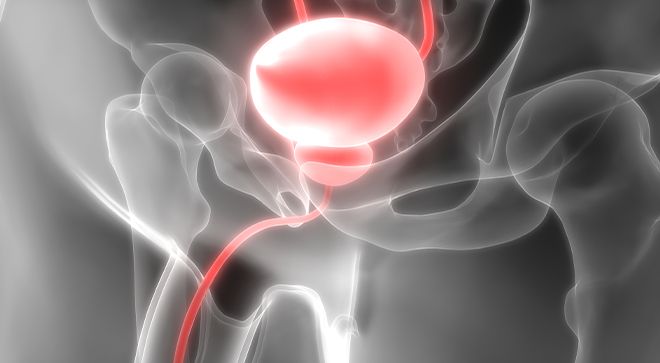Article
Penis Implants, Other Devices Help Improve Quality of Life Issues in Men Following Prostate Cancer Treatment
Author(s):
Men may experience erectile dysfunction and incontinence after receiving treatment for prostate cancer. However, there are devices — like a penile prosthetic and artificial urinary sphincter — that can help control those side effects associated with treatment.
For many men, treatment for prostate cancer can result in certain side effects that can greatly impact a patient’s quality of life. However, as Dr. Christopher E. Wolter explains, there are implantable devices that effectively help patients live with those side effects.
During the recent virtual CURE® Educated Patient® Summit on Prostate Cancer, Wolter, a urologist at Mayo Clinic in Arizona, discussed some common side effects that occur in men follow prostate cancer treatment. Wolter also highlighted how effective certain implantable devices are in in treating these common side effects, compared to other available treatments.
Approximately 30-70% of men, according to Wolter, experience erectile dysfunction with incontinence of some form following prostate cancer surgery. Similarly, Wolter noted that up to half of the patients treated with radiation therapy experience erectile dysfunction with incontinence.
The problem, as Wolter noted, is these side effects not only lead to physical discomfort but psychosocial issues as well. According to Wolter, these side effects have far-reaching effects that can impact a patient’s marriage, self-esteem, and social life, especially as most patients with prostate cancer enter the age for experiencing erectile dysfunction naturally.
“A lot of men carry regrets for getting treated,” Wolter explained, “and they wish they would have known more before going through this. This is one of the most common conversations we have to have with patients when they're coming in for one of these (side effects).”
Effectively Treating Erectile Dysfunction
When it comes to erectile dysfunction, there are two forms of treatment patients can receive. There are common treatments, such as medications that include Viagra (sildenafil citrate), and uncommon, often less desirable, treatments such as self-administered injection therapy in the patient’s penis and vacuum erection devices that require assistance from a partner.
Penile rehabilitation consists of using medication for erectile dysfunction three to seven times per week shortly after surgery and although patients placed on the rehab plan are two to five times more likely to regain erections suitable for intercourse, half of them remain impotent. Which is why Wolter describes the three-piece penile prosthesis as a mainstay in erectile dysfunction treatment.

In terms of overall satisfaction, the penile prosthesis has a much higher satisfaction rate in comparison to other treatments such as oral medication and penile injection. Wolter discussed results of a study that showed a 93% satisfaction rate in patients who received the prosthesis compared with 51% and 40% in the other treatments.
According to Wolter, this is due to the effectiveness of the prothesis along with its discreetness and reliability, moreover, the prosthetic can last 10 to 15 years with slight adjustments sometimes necessary. The three-piece device is completely under patient control with the pump accessible to the patient and put in after only one surgical incision.
Infections occur in 1% of men who receive a prosthesis, but Wolter cautioned that side effects from the surgery can be catastrophic. If the device breaks, patients need an immediate surgery which carries a higher infection risk.
“Everything is concealed completely,” Wolter said when describing the prosthetic. “Cosmetically, it's very acceptable, I would not know somebody had one just by looking at them. So, it does maintain that sense of self-esteem for the patients, knowing that they can be more potent.”
The ‘Gold Standard’ For Treating Incontinence
It can take up to 18 months for patients to regain normal continence following their prostate cancer treatment, Wolter said. There are multiple treatments available to patients including bladder control exercises, wearing adult diapers, external devices, and surgery among others.
Most men will experience incontinence to some degree after surgery, but the more severe form is less common than erectile dysfunction.
“What we have here in men after prostate cancer treatments is usually a failure of storage. And that can be a big issue for a lot of men,” Wolter explained. “The sphincter muscle is usually the thing we focus on the most, it's a circular muscle at the level of the tip of the prostate, that controls the flow of urine. So, you can see no matter how the prostate cancer is treated, the sphincter is in very close proximity and it's very likely to get affected by whatever treatment there is.”
The impact of incontinence has different physical side effects for men such as reliance on adult diapers, staining of clothes, causing an odor uncomfortable to them and their partner and can significantly reduce activity outside of their home like exercise and social gatherings. Wolter also stressed that erectile dysfunction and incontinence can impact men’s self-esteem and overall mental health too. Which is where an artificial urinary sphincter can help.
Like the penile prosthetic, the artificial urinary sphincter is a device that consists of three components: a cuff, a pump and a pressure regulating balloon. This device is also under patient control and completely concealed due to internal surgery.
Patients control the device by manipulating a pump hidden in the scrotum to allow for a flow of pressure through the cuff, controlled by a pressure-regulating balloon, that is attached to the urethra. This allows patients the opportunity to control their urination even when it is spontaneous after treatment for prostate cancer. The device will also refill by itself after urination without manipulating the pump.
“The artificial urinary sphincter is what we consider to be the gold standard of treatment,” Wolter said. “This has a long history of success in various forms, it's been around for almost 40 years, cure rates are reported about 85% of men, it's probably higher than that, but it just depends on how severe the incontinence is to begin with.”
For more news on cancer updates, research and education, don’t forget to subscribe to CURE®’s newsletters here.




